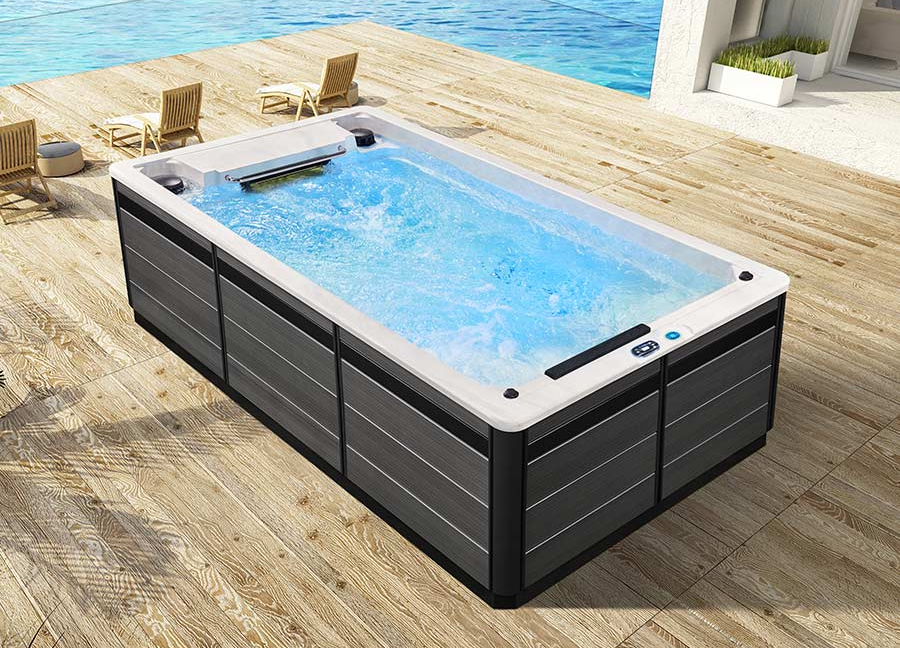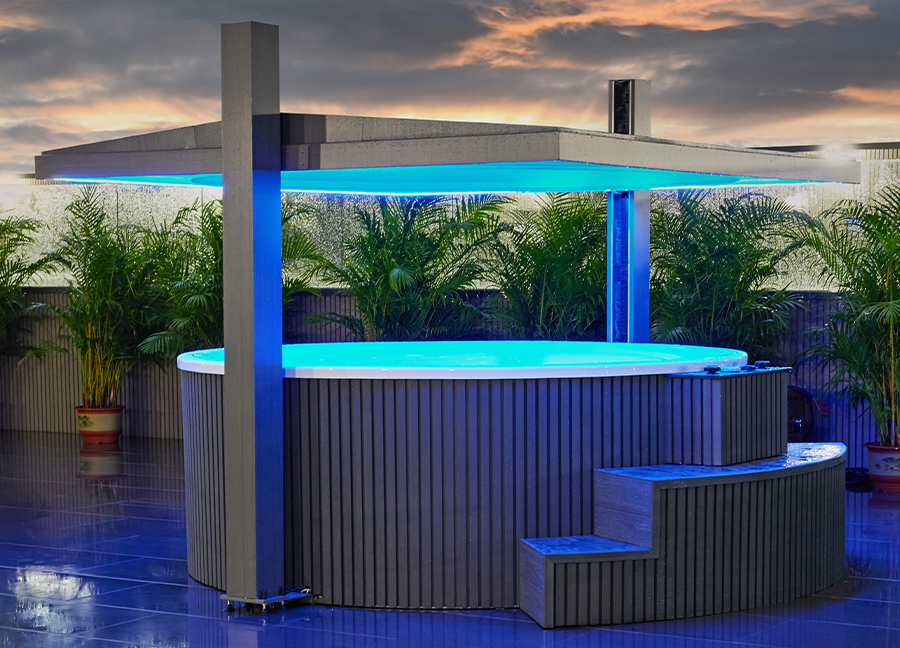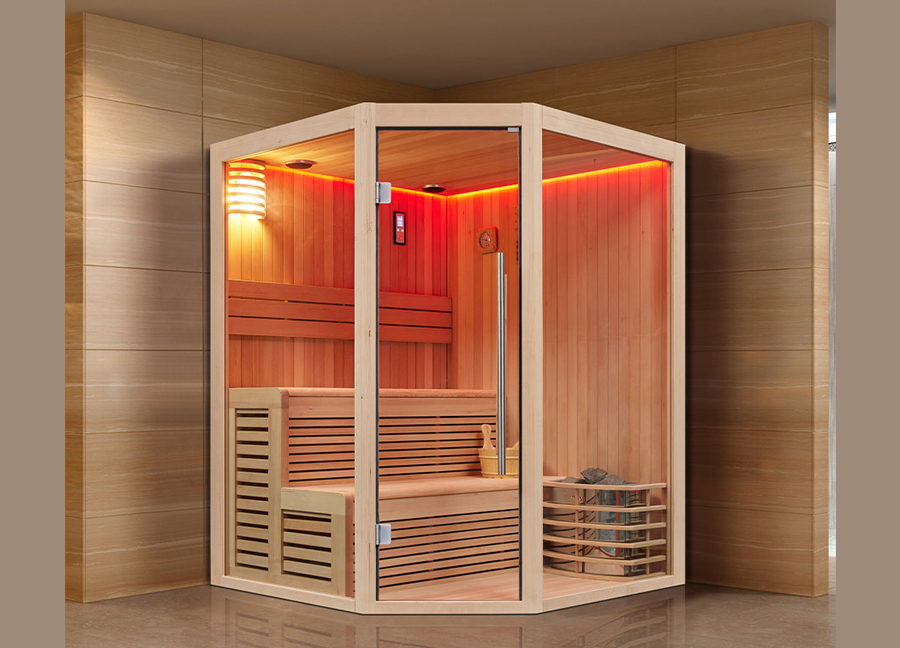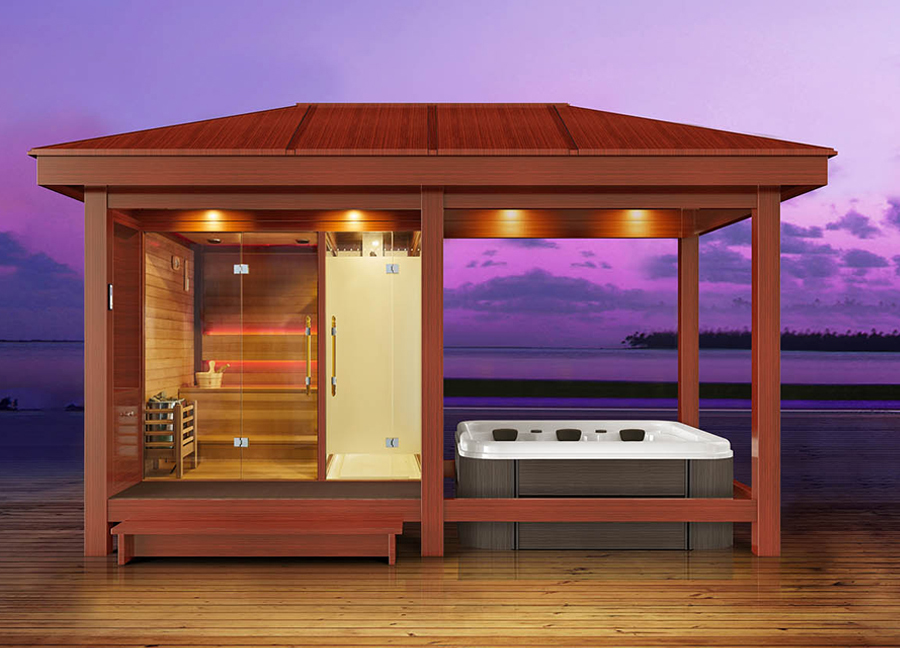A whirlpool jacuzzi bathtub is a modern bathroom fixture that combines multiple functions, including relaxation, therapy, and beauty. Due to its complex structure, frequent use, and prolonged exposure to high temperatures and humidity, it is highly susceptible to the growth of dirt and microorganisms.
Many people, while enjoying the comfort of a whirlpool jacuzzi bathtub, often overlook its hygiene. Just because a whirlpool jacuzzi bathtub appears "clean on the surface" doesn't necessarily mean its internal systems are also clean.
So, how can you tell if a whirlpool jacuzzi bathtub is dirty? This article will provide a variety of professional perspectives to help users maintain the hygiene and safety of their whirlpool jacuzzi bathtub.
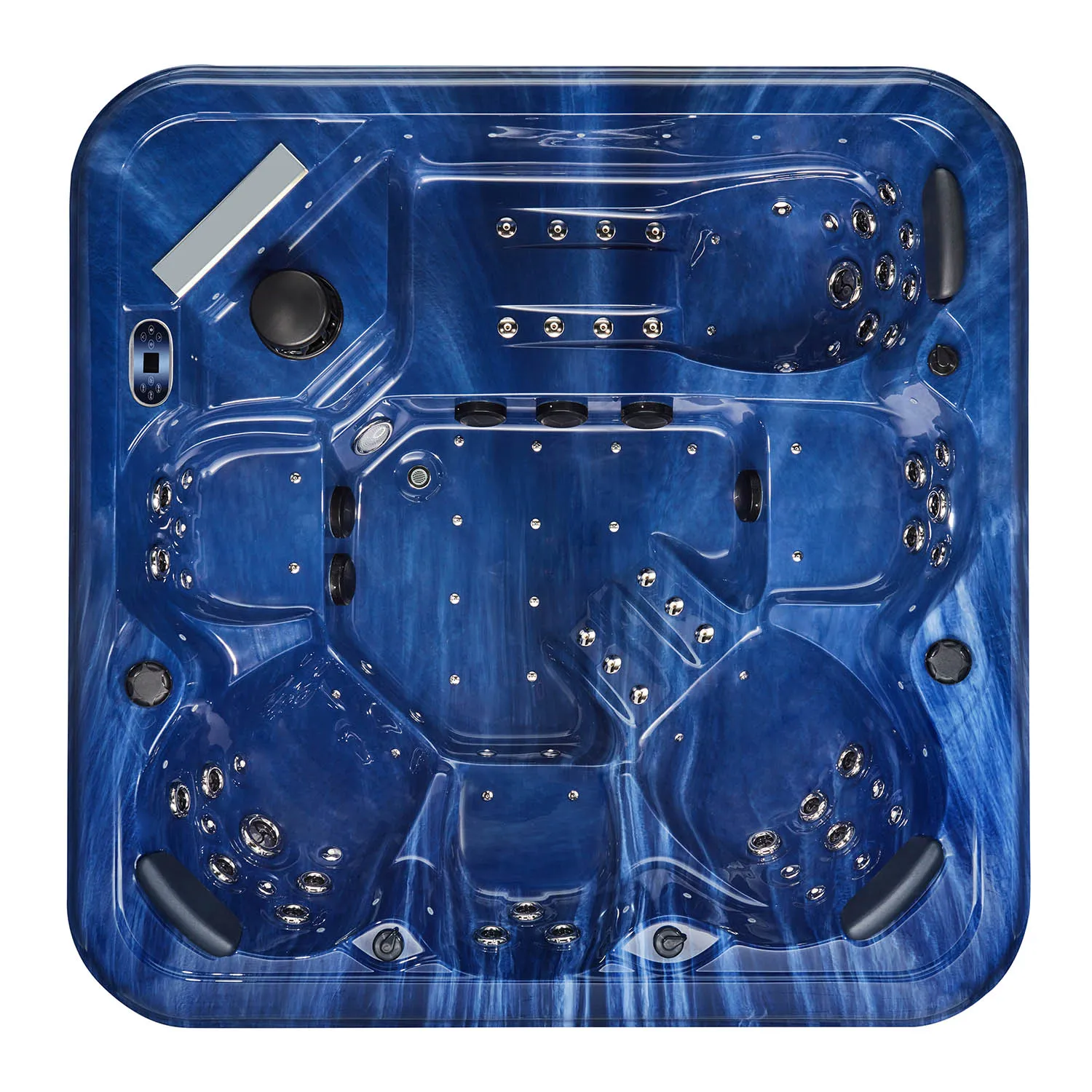
Whirlpool Jacuzzi Bathtub Structural Features and Potential Contamination Risks
1. Whirlpool Jacuzzi Bathtub Structural Components
A standard whirlpool jacuzzi bathtub typically consists of the following components:
· Bathtub body (acrylic, ceramic, or composite material)
· Nozzles (for water jets or bubbles)
· Piping system (connecting the water pump to the showerhead)
· Heating system (maintaining a constant temperature)
· Filtration system (filtering impurities and hair)
· Control system (electronic panel)
These systems work together to maintain the bathtub's water circulation and massage functions. However, the complex structure also creates a breeding ground for dirt accumulation and bacterial growth.
2. Susceptible Areas
| Location | Contamination Risk Causes |
Nozzle wall | Long-term water accumulation and difficulty in drying out create favorable conditions for microbial growth |
| Pipe system | Poor water flow or residual water odor during periods of inactivity |
| Filter | Clogging, dust accumulation, and hair entanglement reduce filtration efficiency |
| Bathtub crevices | Clean corners trap dirt and grime |
| Water pump/water inlet | Easily accumulate silt and sediment |

What are the signs of a dirty whirlpool jacuzzi bathtub?
To determine if a whirlpool jacuzzi bathtub is dirty, you can use visual, olfactory, tactile, and user experience to provide preliminary indications.
1. Visual Identification: Visible Signs of Contamination
· Black or yellow stains around the nozzle: This is usually due to the accumulation of scale, mold, or sebum.
· Abnormal oil or bubbles on the water surface: A milky white film or persistent foam on the water surface indicates the presence of grease or detergent residue.
· Turbid water with floating particles: This could be dirt, hair, or mold from the pipes.
· Yellowish, gray, or sticky bathtub lining: This could be organic deposits from prolonged cleaning.
2. Olfactory Identification: Warning signs of unusual odors
· Moldy odor: This is common in whirlpool jacuzzi bathtubs that have not been used for a long time and are damp and closed, leading to mold growth.
· Foul or rotten odor: This could be caused by stagnant water in the pipes or the deterioration of biological residues.
· Chemical or pungent odor: This could be caused by improper cleaning or improper mixing of detergents.
3. Tactile Identification: Touch indicates the cleanliness level
· Slippery feeling: This could be caused by a grease film, soap residue, or a microbial film on the inner wall.
· Slippery and rough: This could be caused by a film on the surface of a whirlpool jacuzzi bathtub that appears clean.
· Grainy texture: This may be caused by scale or pipe debris.
4. Changes in functional performance
· Reduced water flow: The showerhead is partially clogged or the pipes are contaminated.
· Uneven bubbles: The nozzle is clogged with grease or the air passage is restricted.
· Filter alarm: The filtration system has detected an abnormal blockage.
· Itchy skin or a rash after bathing: This indicates the presence of bacteria, mold, or chemical residue in the whirlpool jacuzzi bathtub water.
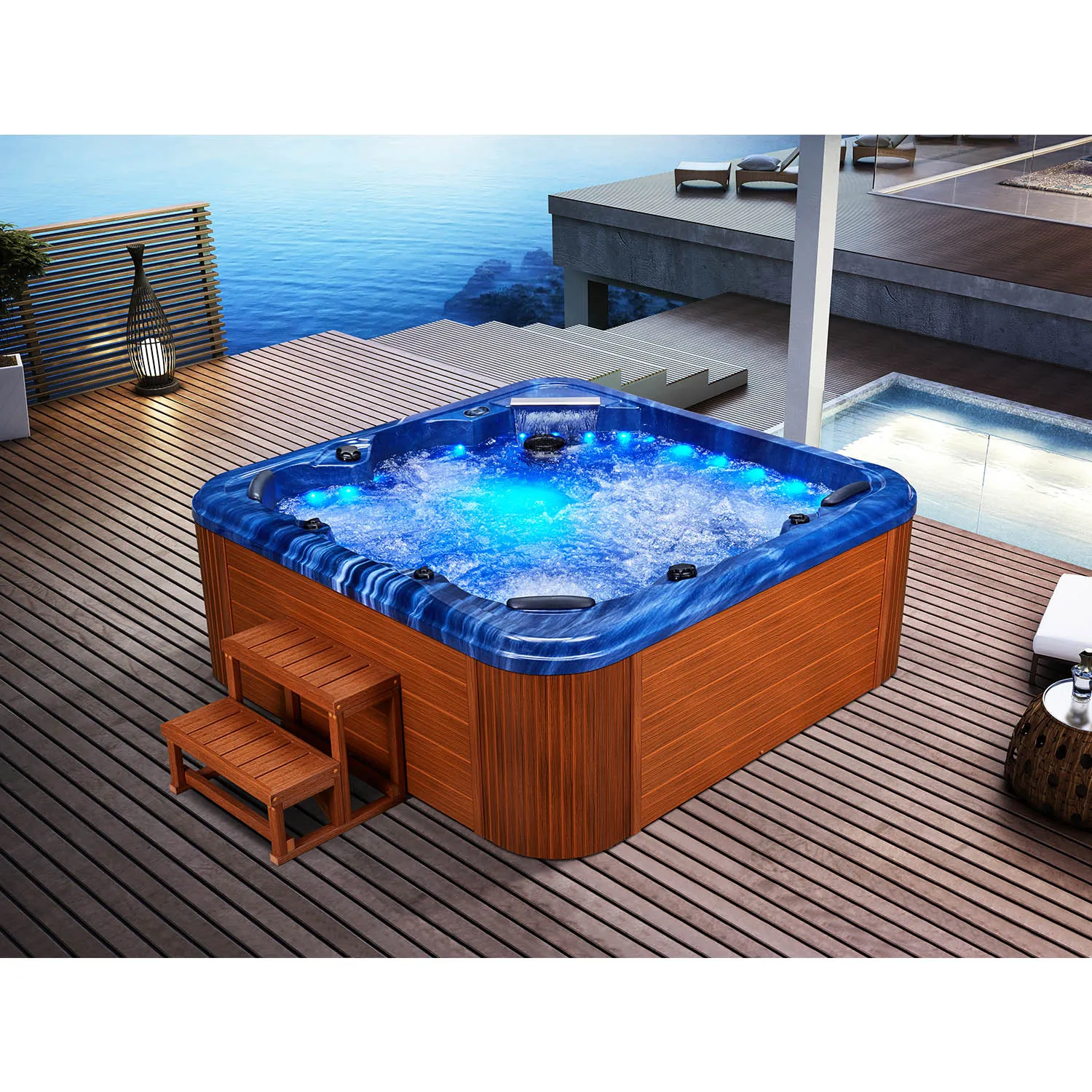
What are the common sources of contamination in whirlpool jacuzzi bathtubs?
Understanding the sources of contamination can help identify and prevent whirlpool jacuzzi contamination from the root cause.
1. Human secretions
· Sweat, sebum, and dead skin cells can remain in the water and on the bathtub walls during use.
· Female users often leave behind makeup and sunscreen residue.
· Even trace amounts of excrement from nude bathing should not be ignored.
2. Cleaners and Care Products
· Foam-rich products such as shower gel and shampoo can easily form foam deposits;
· Certain cleaning agents not suitable for whirlpool jacuzzi bathtubs can corrode pipes or cause chemical reactions;
· Excessive disinfectant can leave residue on the tub walls.
3. External Environmental Factors
· Moisture in the bathroom can foster mold growth;
· Dust, hair, and pet dander can enter the bathtub through air;
· Using unfiltered water may contain sand, rust, and microorganisms.
4. Contamination of the Pipes
· Biofilm forms on the inner walls after long-term use;
· Residual water in the pump can lead to bacterial growth;
· Bends in the pipes are prone to blockage, making them difficult to clean.
How can you scientifically assess the hygiene of a whirlpool jacuzzi bathtub?
In addition to sensory evaluation, more professional testing can be performed using instrumental methods and regularity indicators.
1. pH and Water Quality Testing
Use a home water quality tester to test the pH, residual chlorine, hardness, nitrite, and microbial count in your Whirlpool Jacuzzi bathtub.
| Indicators | Normal range | Abnormal Symptoms |
pH | 6.5-7.5 | <6 or >8 indicates skin irritation |
| Residual Chlorine | 0.3-0.6 ppm | Too high a concentration can be pungent, while too low a concentration can easily breed bacteria |
| Nitrite | 0 ppm | High concentrations indicate water contamination |
| Total Colony Count | <100 CFU/m | Exceeding the standard indicates uncleanness |
2. Cleaning Test
You can perform the "flushing test" to determine the water quality:
· Start all nozzles in the Whirlpool Jacuzzi bathtub, heat it, and fill it with water.
· Add a dedicated cleaning solution and run the bathtub for 10 minutes.
· Observe the nozzles for a large amount of black or brown foam or flocculent material.
· If there is noticeable sediment, it indicates severe contamination.
3. Time-Based Determination
If the following conditions occur, consider bathtub hygiene issues:
· The bathtub has been used for more than 10 consecutive times without being thoroughly cleaned.
· The bathtub has not been drained or cleaned for more than two weeks without being used.
· The last thorough cleaning has occurred more than 30 days ago.
· The bathtub has been used by multiple people but not cleaned promptly.
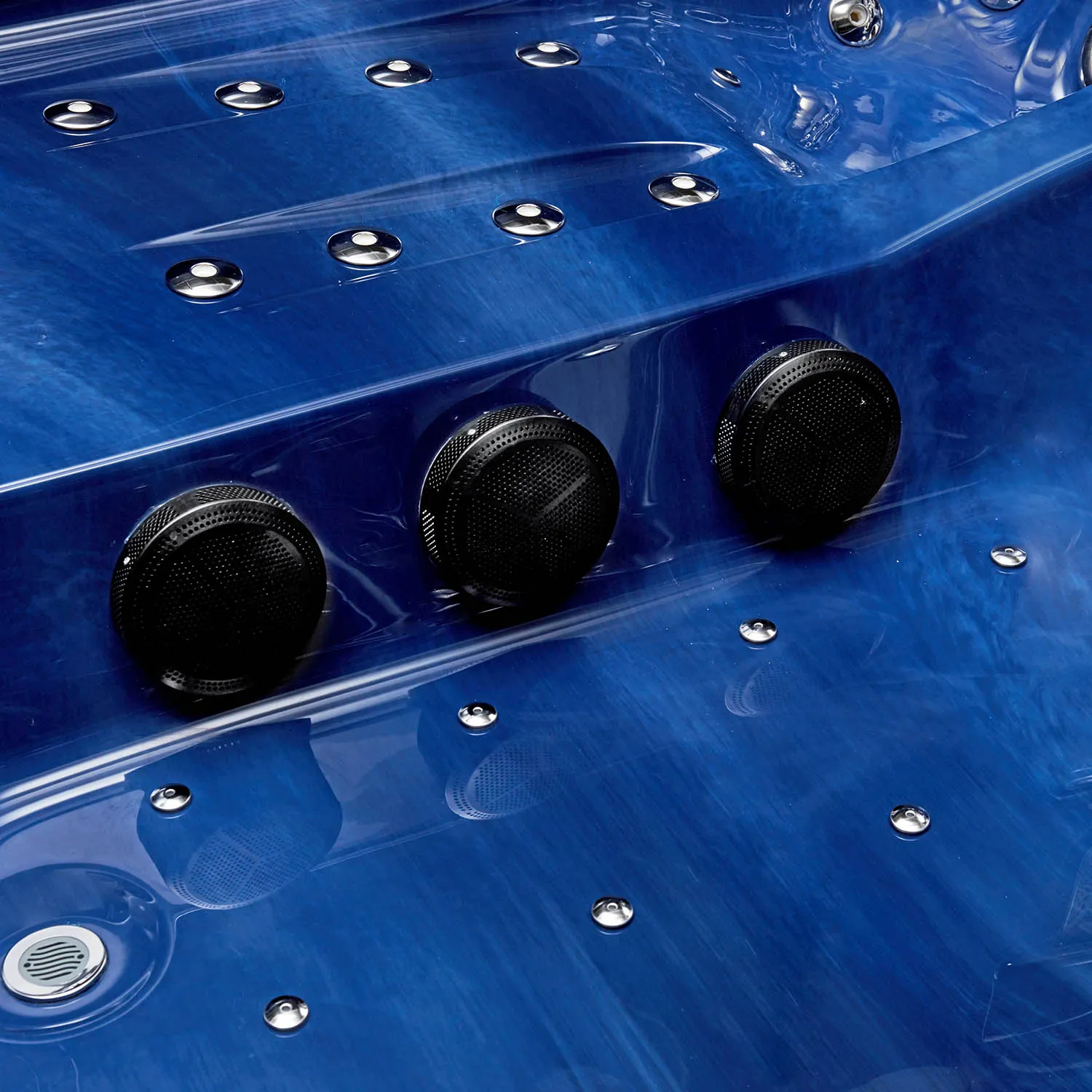
Whirlpool Jacuzzi Bathtub Maintenance and Prevention Tips
Determining whether your whirlpool jacuzzi bathtub is dirty is only the first step. More important is daily preventative and regular maintenance. The following tips will help keep your bathtub looking pristine.
1. Basic Cleaning After Each Use
· Wipe the inner wall of the tub with a clean, soft cloth;
· After draining the water, run the jets for 30 seconds to remove any remaining water;
· Wipe the nozzle edges with a neutral detergent.
2. Weekly Maintenance
· Flush the plumbing system with a dedicated spa cleaning solution;
· Remove and flush or replace the filter;
· Check the drain and jets for blockages.
3. Monthly Deep Cleaning
· Perform a high-efficiency disinfectant clean with a chlorine- or oxygen-based cleaner;
· Also clean the exterior, panel buttons, and water inlet;
· Maintain good ventilation and dry conditions to inhibit bacterial growth.
Can MEXDA Support After-Sales Service for Overseas Buyers?
Yes, we provide robust after-sales support to our international customers. This includes technical guidance, spare parts supply, video tutorials, and remote troubleshooting for installation and maintenance. Our company values long-term partnerships and supports our distributors and buyers throughout the lifespan of their spas or saunas.
If you're sourcing a supplier from China for your brand or store, know that with MEXDA, support doesn't end after the sale—we help protect your reputation too.

